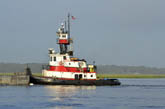Understanding the Differences Between Sea freight and Air freight
In the global supply chain, choosing the right freight transportation method is crucial for businesses to ensure efficiency and cost-effectiveness. Two of the most common methods are sea freight and air freight. Understanding their differences and advantages will help you make the best decision for your logistics needs.
What is Sea Freight?
Sea freight, also known as maritime transportation, involves shipping goods by sea. It is a reliable and cost-effective option for transporting large volumes of goods over long distances. Companies that rely on consistent delivery schedules or require lower costs often prefer sea freight. However, it can be slower compared to air freight, especially for time-sensitive items.
What is Air Freight?
Air freight, on the other hand, involves shipping goods by air. This method is known for its speed and efficiency, making it ideal for time-sensitive deliveries. Air freight is commonly used by high-value products, perishables, or goods requiring urgent transit. While it can be more expensive than sea freight, the convenience and reliability often outweigh the costs for businesses with tight deadlines.
Key Differences
While both sea and air freight have their own advantages, the choice between the two largely depends on your specific needs. Sea freight is more cost-effective and suitable for large-scale, long-distance shipments, whereas air freight offers faster transit times and is better for perishable or high-value goods.
Conclusion
Choosing between sea and air freight requires evaluating factors such as delivery speed, cost, and the type of goods being shipped. Understanding these differences will help you select the most appropriate transportation method, ensuring your logistics operations run smoothly and efficiently.
